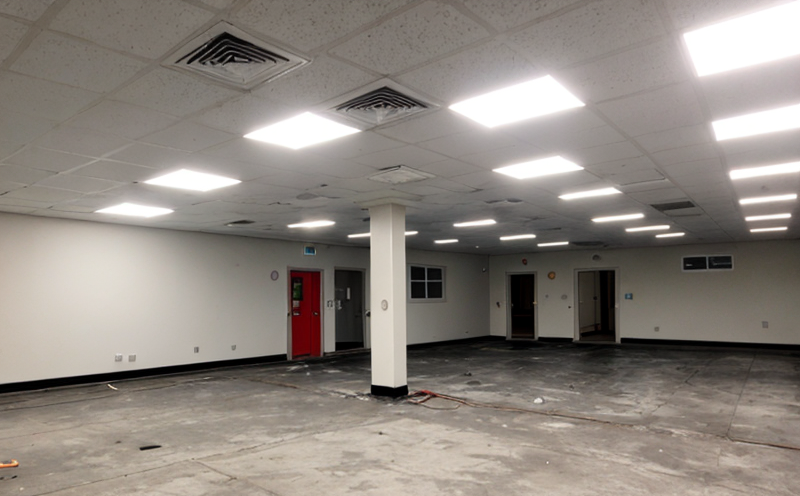Emergency Lighting Compliance Inspection
The importance of emergency lighting in critical facilities such as hospitals, data centers, and airports cannot be overstated. In sectors where continuous operations are essential, any disruption can have severe consequences. Emergency lighting systems serve as a lifeline during power outages or other emergencies by providing the necessary illumination to ensure safe evacuation and continued operation.
Emergency lighting compliance inspection is a critical process that ensures these systems meet stringent standards set forth by regulatory bodies like the National Fire Protection Association (NFPA), International Electrotechnical Commission (IEC), and others. Compliance inspections not only safeguard human life but also help facilities avoid costly fines, legal action, and reputational damage.
During an inspection, technicians evaluate various aspects of emergency lighting systems, including:
- Light output: Ensuring that the luminance levels meet specified standards during emergencies.
- Battery performance: Testing batteries to ensure they can power the lights for the required duration in case of a power failure.
- Automatic activation: Verifying that lights activate automatically when the main power supply is lost.
- Emergency operation time: Confirming that the system remains operational for the specified minimum time.
- Signaling and marking: Checking that all exit signs and markings are clearly visible and correctly placed.
The process of compliance inspection involves detailed testing, documentation, and reporting. Our team uses cutting-edge equipment and follows international standards such as NFPA 101, IEC 62788, and EN 50173 to ensure thorough inspections that meet the highest quality standards.
Why It Matters
The significance of emergency lighting compliance inspection is underscored by several factors:
- Regulatory Compliance: Failure to comply with regulations can lead to substantial penalties and reputational damage. Regulatory bodies like NFPA and IEC set strict guidelines that must be adhered to.
- Safety: In high-risk environments, the failure of emergency lighting could result in severe injuries or fatalities during emergencies.
- Operational Continuity: Emergency lighting ensures that operations can continue smoothly even when main power is unavailable. This is particularly crucial for industries such as healthcare and data centers.
- Economic Benefits: Regular compliance inspections can prevent costly repairs and replacements, ensuring the longevity of emergency lighting systems.
The potential consequences of non-compliance are profound. Not only do facilities face financial penalties and reputational damage, but they also risk compromising public safety. Regular inspection and maintenance are essential to ensure that these systems function correctly in times of need.
Industry Applications
The application of emergency lighting compliance inspections extends across various industries:
- Hospitals and Healthcare Facilities: Ensuring safe evacuation during power outages or emergencies is critical for patient care. Compliance inspections help maintain the integrity of emergency lighting systems.
- Data Centers: Continuous operations are paramount in data centers to prevent service interruptions. Emergency lighting ensures that staff can safely evacuate or continue critical operations if necessary.
- Airports and Transportation: Safe evacuation during emergencies is essential for airport facilities, ensuring the safety of passengers and staff.
- Retail and Commercial Buildings: In large commercial buildings, emergency lighting compliance inspections ensure that all areas are adequately lit in case of a power outage.
In each of these sectors, the role of emergency lighting is vital. Regular compliance inspections help maintain this critical infrastructure, ensuring it remains reliable during emergencies.
Use Cases and Application Examples
The following use cases highlight real-world scenarios where emergency lighting compliance inspection plays a crucial role:
- Hospital Evacuation: During a power outage, hospital staff rely on emergency lighting to safely guide patients and visitors through evacuation routes.
- Data Center Operations: In the event of a power failure, data centers use emergency lighting to maintain operations or ensure safe evacuation.
- Airport Security: Emergency lighting ensures that security personnel can continue their duties during a power outage without compromising safety.
In these examples, compliance inspections are not just about meeting legal requirements but also about ensuring the reliability and functionality of emergency lighting systems in critical situations. Proper inspection and maintenance help prevent potential failures that could lead to significant operational disruptions or safety hazards.





